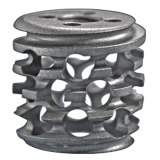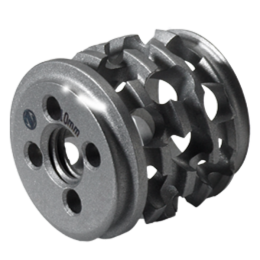Product Description
The BAK/C Anterior Cervical Interbody Fusion System is the comfortable choice for patients experiencing degenerative disc disease of the cervical spine. The BAK/C system gathers bone during decompression, bone bed preparation, and implantation. The self-packing of bone into the implant’s chamber produces a local autograft and eliminates the need to harvest from the iliac crest.
Features
Device Description
The BAK/C® Interbody Fusion System consists of hollow, perforated, threaded, cylindrical implants. The BAK/C implants are available in several diameters to accommodate variations in patient anatomy; all implants are 12mm in length. Implants are made from titanium alloy (Ti-6A1-4V), conforming to ASTM F136. Instruments designed for implantation of implants are made from stainless steel. Implants may be implanted singularly or in pairs at the affected disc level. Refer to the Surgical Technique Manual for additional information on how to use these devices.
Indications
The BAK/C implant is indicated for use in skeletally mature patients with degenerative disc disease (DDD) of the cervical spine with accompanying radicular symptoms at one disc level. DDD is defined as discogenic back pain with degeneration of the disc confirmed by history and radiographic studies.BAK/C mplants are used to facilitate fusion in the cervical spine and are placed via an anterior approach at the C-3 to C-7 disc levels using autograft bone.
Contraindications
BAK/C devices should not be implanted in patients with an active infection, or an allergy to titanium or titanium alloy.
Safety Information
As with any surgical procedure, inherent risks are present and precautions should be taken.Surgeons should not implant the BAK/C Interbody Fusion System until receiving adequate training in the surgical technique. In the clinical study of patients receiving the BAK/C device, the most common adverse event was degeneration of an adjacent disc (6%).Other adverse events that are possible with cervical spinal surgery include paralysis, displacement or breakage of the implant, injury or damage to adjacent bones, discs or soft tissues, or death.
For a complete list of warnings, precautions and possible adverse events, please refer to the product IFU or contact your Zimmer Spine Sales Representative. This document is written for professional medical audiences. If you have questions regarding the currency of this information, contact Zimmer Spine.








